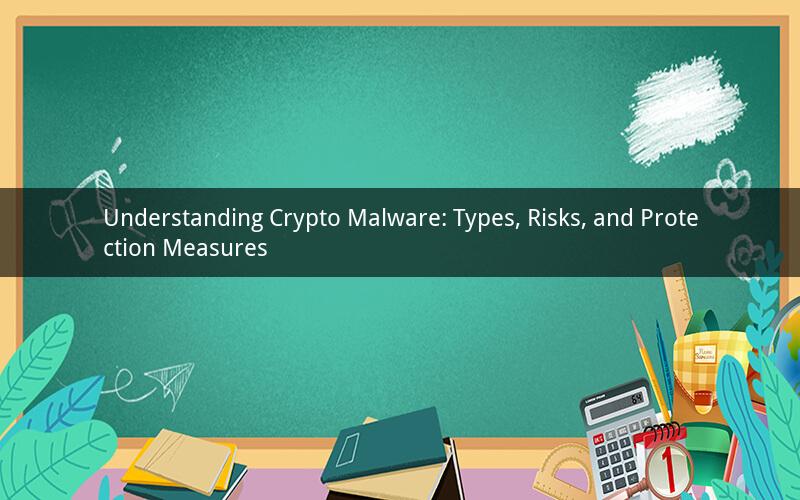
Crypto malware, also known as ransomware, has become a significant threat to individuals and businesses worldwide. This type of malicious software encrypts a victim's files, demanding a ransom for their release. In this article, we will delve into what crypto malware is, its types, risks, and ways to protect against it.
What is Crypto Malware?
Crypto malware is a type of malware that encrypts a victim's files, rendering them inaccessible until a ransom is paid. The malware is typically spread through phishing emails, malicious websites, or compromised software. Once a user's device is infected, the malware searches for files on the system and encrypts them using a strong encryption algorithm.
Types of Crypto Malware
1. Ransomware: The most common type of crypto malware, ransomware encrypts files and demands a ransom in exchange for the decryption key. The ransom is usually paid in cryptocurrencies, such as Bitcoin, to ensure anonymity for the attacker.
2.Locker: Similar to ransomware, locker malware encrypts files and demands a ransom. However, lockers are more likely to encrypt the entire system, making it impossible for the user to access any files or applications.
3. Filecoder: Filecoder malware encrypts files and then spreads to other devices on the network. This type of malware is designed to spread quickly and cause widespread damage.
4. MBR (Master Boot Record) malware: This type of malware attacks the Master Boot Record, rendering the system unbootable. The attacker demands a ransom to restore the system to its original state.
Risks of Crypto Malware
1. Data Loss: The most significant risk of crypto malware is data loss. Encrypted files can be impossible to recover without the decryption key, which is only provided after the ransom is paid.
2. Financial Loss: Paying the ransom does not guarantee that the attacker will provide the decryption key. Even if the key is provided, there is no guarantee that the attacker will not attempt to extort additional payments in the future.
3. Damage to Reputation: For businesses, the impact of crypto malware can be devastating. If a company falls victim to a ransomware attack, it could suffer a loss of customer trust and face legal repercussions.
4. Legal and Compliance Issues: Companies that fall victim to crypto malware may face legal and compliance issues, especially if they are unable to provide evidence of their data protection measures.
How to Protect Against Crypto Malware
1. Keep Your Software Updated: Regularly update your operating system and software to ensure that you have the latest security patches.
2. Use Antivirus and Anti-Malware Software: Install reputable antivirus and anti-malware software on your devices and keep them updated.
3. Be Wary of Phishing Emails: Be cautious when opening emails from unknown senders or clicking on suspicious links. Do not download attachments from untrusted sources.
4. Backup Your Files: Regularly backup your files to an external drive or cloud storage. This will ensure that you can recover your files without paying the ransom.
5. Educate Employees: Train your employees on how to recognize and avoid phishing attacks and other forms of cyber threats.
5 Questions and Answers
1. Q: Can crypto malware infect mobile devices?
A: Yes, crypto malware can infect mobile devices. However, mobile devices are less likely to be targeted due to the limited amount of sensitive data they typically store.
2. Q: Is it safe to pay the ransom to get my files back?
A: Paying the ransom does not guarantee that you will receive the decryption key. Moreover, paying the ransom encourages cybercriminals to continue their activities.
3. Q: Can crypto malware spread through a network?
A: Yes, some types of crypto malware can spread through a network by encrypting files on other devices connected to the same network.
4. Q: Are there any free decryption tools available for crypto malware?
A: Some crypto malware can be decrypted using free decryption tools. However, these tools may not be available for all types of malware.
5. Q: Can crypto malware be prevented entirely?
A: While it is impossible to prevent crypto malware entirely, you can significantly reduce your risk by following best practices, such as keeping your software updated, using reputable security software, and regularly backing up your files.